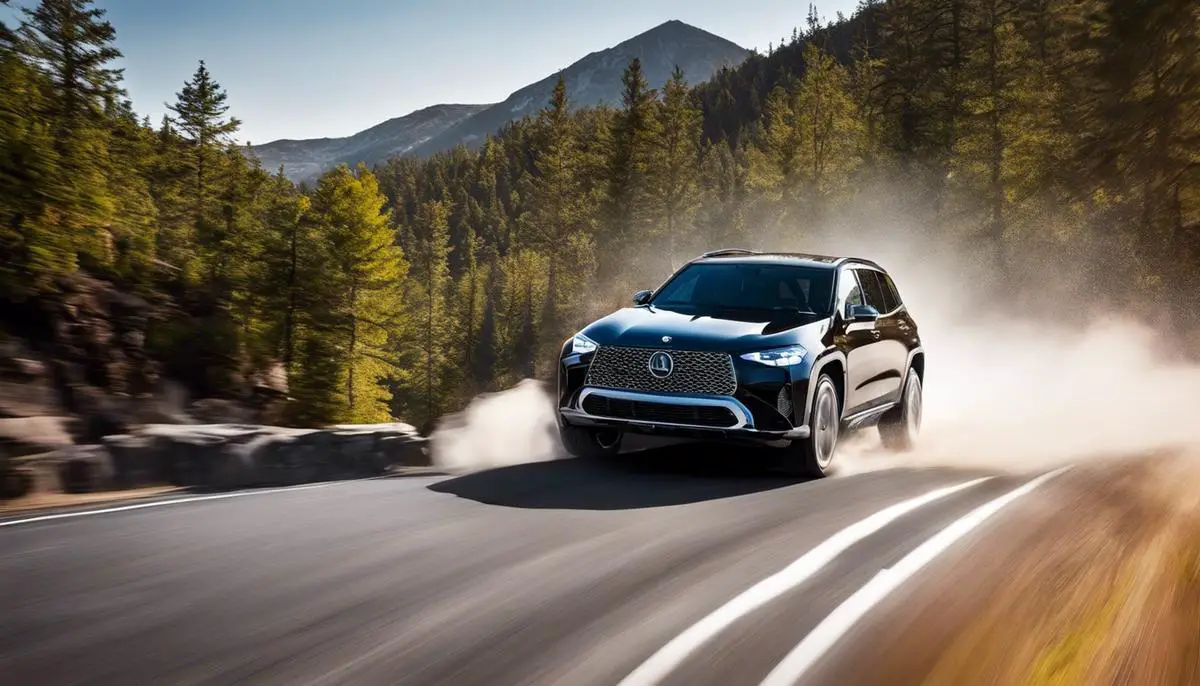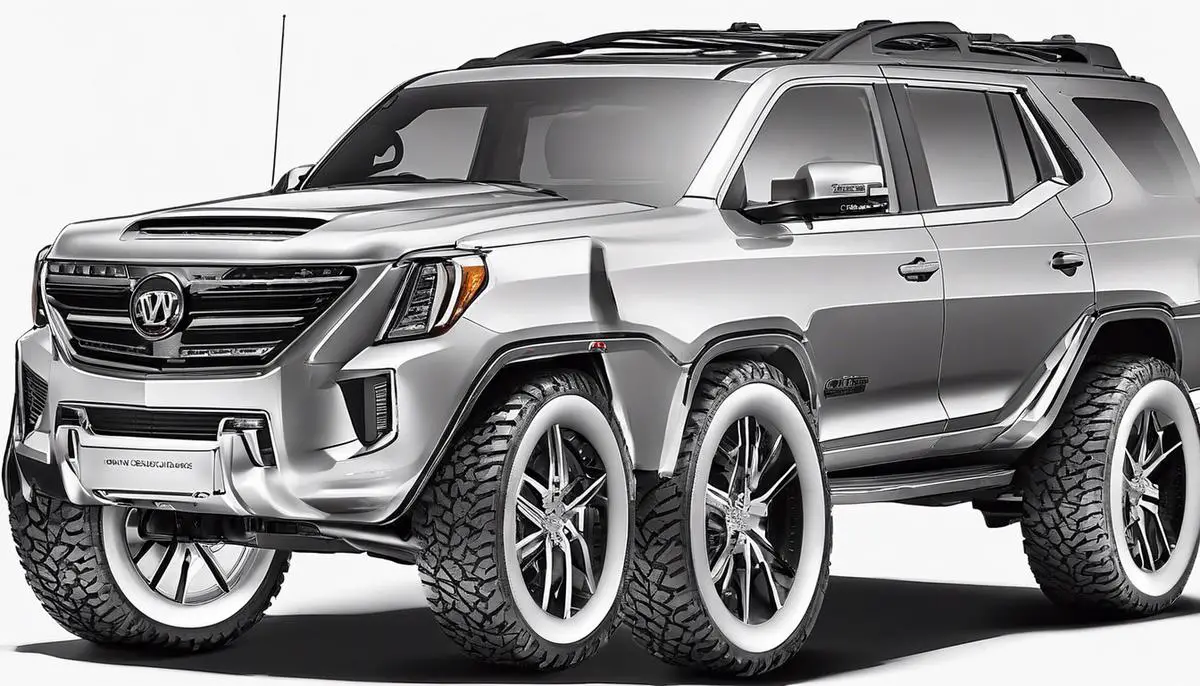When it comes to navigating the diverse landscapes that drivers encounter, ground clearance emerges as a silent hero in the complex world of automotive design. It is more than just a measurement from the lowest point of a vehicle’s chassis to the ground; it is a key factor that determines a vehicle’s versatility and capability. The basics of ground clearance lay the groundwork for understanding its importance in everything from conquering off-road obstacles to simply pulling into your garage without a scrape. As we delve into the intricacies of ground clearance and its profound impact on driving experiences, one can appreciate its design not only for functionality but also for the aesthetics and accessibility it imparts to your vehicle.
Contents
- 1 The Basics of Ground Clearance
- 2 Ground Clearance in Off-Road Conditions
- 3 Ground Clearance for Everyday Driving
- 4 Vehicle Modification and Ground Clearance
- 4.1 Suspension Lift Kits: The Elevator Pitch for Your Ride
- 4.2 Body Lifts: The Cosmetic Boon
- 4.3 Larger Tires: The Quick Fix
- 4.4 Skid Plates: The Underbody Guardians
- 4.5 Adjusting the Air Suspension
- 4.6 Spacers: The Quick Lift Accessory
- 4.7 Final Tips: Don’t Overlook the Alignment
- 4.8 Be Compliant with Regulations
- 5 Ground Clearance and Safety
The Basics of Ground Clearance
Understanding Ground Clearance: Your Key to Off-Roading Freedom
Hey there, trailblazers and pavement avoiders! Let’s talk ground clearance – that critical measurement from the lowest point of a vehicle’s chassis to the ground. It’s a simple concept, but boy, does it hold weight when you’re facing a boulder that’s daring you to climb it or a trough that threatens to scrape your undercarriage.
Why Ground Clearance Matters
Imagine scaling a scenic mountain path, only to hear the cringe-worthy sound of metal dragging across rock. That’s your cue that ground clearance matters. It’s the breathing room your car needs to tackle obstacles without the fear of damaging vital components underneath. Ground clearance dictates whether you sail over barriers or get stuck admiring the scenery from a very stationary position.
For Off-Roading Adventurers
Venturing off the beaten path? Ground clearance becomes your best friend. Ford Raptors, Jeep Wranglers, and Toyota Tacomas are vanguards in this realm for a reason. More clearance means less worrying about your adventure ending on the edge of a rock and more focus on conquering the wild.
For City Slickers and Country Cruisers
Don’t think this is only an off-roader’s concern. Ever faced a steep driveway, a menacing speed bump, or a winter wonderland of snow? Yep, ground clearance matters here too. It’s the difference between gracefully navigating urban jungles and country backroads or scheduling un-fun time with your mechanic.
How Much Do You Need?
Like most good things, there’s no one-size-fits-all answer. Are you a weekend warrior hitting light trails? A generous 8-9 inches should keep you out of trouble. Hardcore rock crawler? Aim for 10 inches or more. And if those numbers seem sky-high, remember urban adventurers can often get by with less.
Wrap Up
So, when pondering your next vehicle purchase or planning upgrades, keep ground clearance in the forefront of your mind. It isn’t just a spec; it’s the unsung hero that keeps your underbelly safe and your adventures limitless. Whether conquering peaks or commuting on pothole-riddled streets, it’s a vital feature that should never be overlooked. Choose wisely, and tread confidently – your destination awaits, no matter the terrain.

Ground Clearance in Off-Road Conditions
Ground Clearance and Off-Road Dominance: The Undeniable Connection
Venturing off the beaten path in a 4×4 is as thrilling as it is demanding. For those drawn to the call of the wild, understanding the impact of ground clearance on off-road performance is akin to a knight knowing the quality of their armor.
Let’s steer into the nitty-gritty of ground clearance and how it dictates the off-roading experience. Think of ground clearance as the vital buffer zone between your vehicle’s undercarriage and the unpredictable terrain beneath. With greater clearance, obstacles like rocks, logs, and uneven paths become mere footnotes in an epic journey.
The Art of Angles – Approach, Breakover, Departure
Ground clearance goes hand-in-hand with critical off-road metrics: approach, breakover, and departure angles. The approach angle, the slope your vehicle can climb without scraping the front end, directly correlates to ground clearance. Similarly, the breakover angle, the steepest crest a vehicle can pass over, is dictated by the space between terrain and chassis. Finally, the departure angle represents the sharpest decline you can navigate without the rear kissing the ground.
All-Terrain Adaptation – Suspension Flexibility
Scouring rocky terrains and tackling steep inclines? Don’t overlook the harmony between ground clearance and suspension flexibility. Ample clearance is a boon, but pair it with a supple suspension that can articulate, keeping tires in contact with terra firma, and you’ve got a recipe for sovereign off-road authority.
The Balance Conundrum – Stability vs. Clearance
Pursuing maximum ground clearance can lead to a precarious high center of gravity, which may challenge stability. Here lies the delicate equilibrium that off-roaders must respect — finding a sweet spot where ground clearance is maximized without compromising the vehicle’s balance. Aftermarket modifications that take into account lift kits, larger tires, and suspension upgrades can help maintain this balance.
Tire Choices – The Unseen Allies of Clearance
Often unsung heroes, tires play a pivotal role in ensuring adequate ground clearance. Bigger, more robust tires not only elevate the vehicle further from the earth’s grasp but also afford better grip and traction across inhospitable terrains.
Cautious Considerations – Beyond Clearance
While ground clearance is fundamental, it’s one piece of a larger puzzle. Adequate skid plates, differential locks, tire pressure adjustments, and driving technique all contribute to a successful off-road conquest. However, it remains undeniable that a generous ground clearance sets the stage for these elements to perform harmoniously.
Where We Tread
Embarking on off-road escapades, ground clearance serves as both shield and sword, protecting your vehicle’s underbelly while granting the freedom to roam where lesser cars fear to tread. From the rhythmic ballet of suspension travel to the strategic inching over a boulder-strewn path, clearance is a constant companion, pivotal in its silence yet profound in its significance.
As adventurers chart new paths and ascend challenging trails, the whisperings of ground clearance resonate, a testament to its enduring impact on the untamed orchestra of off-road performance.

Ground Clearance for Everyday Driving
Navigating the Daily Grind: Does Ground Clearance Keep You Above the Fray?
So, we’ve talked up a storm about the nitty-gritty of ground clearance for those dusty trail blazers and the calm and composed tarmac-huggers alike. We’ve weighed in on just how much lift gets the job done, and we’ve dissected the impact of clearance on vehicle choices and upgrades. But let’s dive a bit deeper, shall we? After all, for the daily driver, the question looms: is ground clearance the hill to die on, or just a molehill barely worth the mention?
Well, chalk it up to urban legend or not, but here’s a nugget of truth: parking stops are eager to snag low-hanging bumpers. Ever witnessed the cringe-worthy scrape as someone’s front lip plays tag with a concrete block? Ouch. Higher ground clearance might not safeguard egos, but it sure keeps car parts intact.
What about weather whims? Snow doesn’t ask for permission to fall – it just does its thing. A car that tucks its belly too close to the ground may double as a snow plow in a pinch. Charming thought, but it’s not quite as effective (or fun) in reality. A bit of clearance lifts you out of the slushy fray, letting your daily commute stay on schedule.
Then, consider the urban jungle’s own version of off-roading: pot-holes. These sneaky asphalt craters love playing bumper-car with oil pans and exhaust systems. Sure, urban crawlers won’t need towering ground clearance; but a modest elevation offers a buffer zone – a little peace of mind when navigating the Concrete Serengeti.
But it’s not just about playing defense. There’s room for aesthetics, too. The stance of a vehicle, created partly by its ground clearance, can be a subtle nod to the driver’s personality. A low-slung sports car whispers “speed,” while an elevated SUV shouts “adventure.” Ground clearance contributes to these profiles, branding your daily wagon with purpose and attitude.
Driving in and out of steep driveways, or hopping curbs in tight parking scenarios (we’re not endorsing it, but hey, sometimes life comes at you fast), ground clearance acts like a silent co-pilot, whispering, “I got this.” Lower cars may hold their breath and tiptoe through these common obstacles, while their loftier cousins glide over with confidence.
Remember too, the load you lug alters your clearance in real time. A full house of passengers and gear can make a car sag like a tired mattress. Adequate clearance accounts for the whole gang and their stuff, keeping the underside of your ride untouched by unfriendly speed bumps.
In the bustling thoroughfares and obstacle courses of everyday life, thinking about ground clearance might just be a savvy move. It’s not about scaling boulders or fording rivers, but about tackling those little urban adventures with a tad less fret and a lot more fun. When the rubber meets the road, it’s clear: a well-considered ground clearance is more than a luxury – it’s an everyday shield.
So, ground clearance for daily driving? Not just big – but big enough to matter. Keep your wheels turning and your undercarriage pristine; it’s just another day’s drive, elevated.

Vehicle Modification and Ground Clearance
Modifying a vehicle for increased ground clearance isn’t just a pipe dream for enthusiasts—it’s a concrete possibility for anyone willing to invest time and resources into their ride. Achieving a higher ride can open up a new world of possibilities, from smoother rides on pothole-ridden city streets to conquering treacherous off-road trails.
Let’s roll up our sleeves and delve into this transformative aspect of vehicle modification.
Suspension Lift Kits: The Elevator Pitch for Your Ride
Suspension lift kits are among the most popular solutions for gaining that valuable height. These kits not only elevate the vehicle but also maintain, or even enhance, the quality of the ride. Typically, a suspension lift involves replacing the vehicle’s shocks and struts with taller aftermarket components. Some kits also include spring spacers or longer coil springs. This modification directly increases ground clearance and allows for fitting larger tires, which is another boon for clearance.
Body Lifts: The Cosmetic Boon
Alternatively, a body lift is a modification that raises the body of the vehicle away from the frame. This type of lift is generally more affordable and doesn’t alter the factory suspension, which means the ride quality and handling characteristics remain untouched. However, a body lift won’t improve off-road performance compared to a suspension lift but does allow for larger tires and increased ground clearance.
Larger Tires: The Quick Fix
Swapping out the OEM (Original Equipment Manufacturer) tires for larger, more robust alternatives is an easy way to gain a quick inch or two of clearance. With larger tires, not only does the vehicle gain height, but it also benefits from better traction, which is vital for off-road excursions. It’s essential to ensure compatibility as some vehicles may require additional modifications to accommodate larger tires without rubbing against the wheel wells.
Skid Plates: The Underbody Guardians
While not directly increasing ground clearance, adding skid plates protects the critical components underneath the vehicle (like the oil pan and transmission) from rocks and debris. This is a smart addition post-lift, as the exposed underbody risks more exposure to off-road hazards.
Adjusting the Air Suspension
For vehicles equipped with air suspension, modification can be as simple as adjusting the settings to maintain a higher ride height. Some models offer this customization straight from the factory, while others may require aftermarket solutions or reprogramming to alter the vehicle’s stance.
Spacers: The Quick Lift Accessory
Strut spacers or coil spring spacers are a common modification for a slight lift. These spacers are placed on top of the existing suspension components and can be a cost-effective way to raise the vehicle a few inches. They’re especially popular among enthusiasts seeking a moderate lift without undertaking a complete suspension overhaul.
Final Tips: Don’t Overlook the Alignment
After modifying a vehicle’s height, it’s crucial to address wheel alignment and suspension adjustments to ensure the vehicle’s handling remains safe and predictable. Ignoring this can lead to uneven tire wear, poor handling, and a subpar driving experience.
Be Compliant with Regulations
It’s important to note that heavily modifying a vehicle can affect its legality on public roads. Regulations vary by state, so always check local laws before making changes to ensure the vehicle remains street legal.
In conclusion, increasing a vehicle’s ground clearance is absolutely achievable and can be tailored to suit both aesthetic desires and practical needs. Whether it’s for the rugged trails or the urban jungle, the sky—or rather, the undercarriage—is the limit when it comes to elevating a vehicle’s stature.

Ground Clearance and Safety
Ground clearance isn’t just about getting over bumps and rocks; it’s a key player in the safety and longevity of a vehicle. It’s the buffer zone that separates the belly of a machine from the unpredictable terrain of the world beneath it. Whether cruising through the suburbs, navigating city streets, or plunging into the wild yonder, understanding and optimizing ground clearance can prevent a multitude of mechanical heartaches.
Now, when tackling tough terrain or simply managing the daily grind, one must consider the sacrificial parts of a vehicle’s undercarriage. This underbelly, often home to vital components, warrants protection. Enter undercarriage armor – skid plates and protective panels that act as a shield for the engine, transmission, fuel tank, and exhaust system. However, caution is advised; a full set of undercarriage armor could compromise ground clearance. It’s about finding that sweet spot between shield and space.
Moreover, modifications like lifts and larger tires can alter a vehicle’s center of gravity, potentially affecting its handling characteristics. This leads to a critical safety consideration – stability. It’s recommended to evaluate stability control systems after such modifications, ensuring they adapt to a vehicle’s new dynamics. For those who live where the rubber meets the mud, this is vital. No one wants a top-heavy situation when cresting a ridge or hugging a hillside.
Furthermore, increased ground clearance often calls for a recalibration of a vehicle’s electronic sensors and systems related to braking, traction control, and more. Since many modern vehicles are decked out with an array of these smart systems, proper integration after modifications ensures they react as intended, maintaining safety.
There’s also the matter of legalities and insurance. While it’s tempting to beef up a vehicle to its maximum potential, legal limits regarding vehicle height and modifications exist. Overlooking these could lead to voided warranties, non-compliance with safety standards, and insurance coverage issues. A thorough check of local laws and a chat with an insurance agent before modification is always prudent.
It should be noted that modifications such as suspension lift kits, larger tires, and body lifts not only influence ground clearance but can impact wheel alignment and suspension geometry. Proper alignment is essential to vehicle safety, affecting tire wear, handling, and even fuel efficiency. It’s not just about lifting a vehicle; it’s about maintaining its structural integrity.
In closing, while enhancing and optimizing ground clearance enriches vehicular capabilities and can amplify the thrill of the drive, it’s equally imperative to weigh these safety considerations. Thoughtful planning and responsible modding lead to a safe, enjoyable ride, whether one faces the jagged backcountry or the urban jungle. Remember, with great clearance comes great responsibility.

The nuanced relationship between ground clearance and driving conditions underscores the necessity of tailored vehicle design for personalized driving needs. Whether tackling the untamed wilderness, dealing with the urban jungle’s unexpected obstacles, or contemplating a vehicle modification, understanding and optimizing ground clearance can transform your driving experience. Safety, always at the forefront, is invariably intertwined with these considerations, guiding us to make informed choices about our vehicles. As we navigate the roads less traveled or the daily commute, ground clearance remains an essential aspect of vehicle performance that demands our attention and respect.



